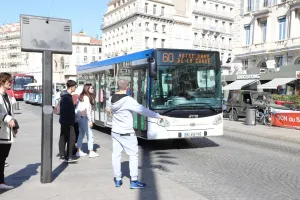The Great City Commute: Weighing Your Options
Ah, city living—where the soundtrack is car horns and the landscapes shift as swiftly as a subway train. If you’ve ever lived in a bustling metropolis, you know that getting from point A to B isn’t just about travel; it’s about making strategic decisions that affect your time, comfort, and wallet. Let's dive into the gritty details of city transportation options, comparing not just the costs but also the efficiency and experiences they entail. Stick around, and I’ll share a few urban travel hacks that have seriously upgraded my daily grind.
Walking: The Underestimated Champion of Commutes
There’s something undeniably charming about beating the rush hour by simply strapping on your sneakers and hitting the pavement. Walking isn’t just free—it’s also unpredictably enriching. You know that quaint coffee shop I discovered last week? Stumbled upon it during my morning stroll. Not to mention, dodging gym guilt feels fantastic when your daily target hits 10,000 steps before lunch.
- Financial Cost: Free.
- Time Efficiency: This varies widely by city layout and personal proximity to key locations.
- Experience: High (weather permitting).
Plus, the health benefits can’t be overstated. But before you ditch your metro card, remember: the viability of walking depends heavily on your city’s design, safety, and your own living arrangements. (nypost.com)
Cycling: Your Fast Track to Freedom... Sometimes
I must confess: I bought into the cycling hype during a particularly sunny spring and immediately regretted it one sweaty August afternoon. Bikes are fantastic for mild climates and flat terrains but can be less appealing in a hill-strewn metropolis or a frosty winter.
- Financial Cost: Moderate (purchase plus occasional maintenance).
- Time Efficiency: Usually faster than walking; competitive with cars depending on traffic.
- Experience: Varies (road conditions and weather are significant factors).
For urbanites lucky enough to have dedicated bike lanes and coherent traffic rules, cycling can be a swift, eco-friendly way to navigate the concrete jungle. Accessibility to bike shares can also enhance this option, skipping over upfront costs and maintenance hassles. (webmd.com)
Public Transit: The Urban Backbone
Whether it’s the subway, buses, or trams, public transportation tries hard to be the MVP of urban mobility. Reliable? Mostly. Affordable? Generally. Understandable? Well, that depends on the city. I still remember my first subway ride in a new city, holding my map upside-down and getting sympathetic glances from locals. It was... a learning curve.
- Financial Cost: Low to moderate (ongoing fares).
- Time Efficiency: High (excluding service disruptions).
- Experience: Medium (crowds and cleanliness can be a drawback).
Tip: Always add a buffer time for important trips. Service disruptions, despite being the banes of every commuter’s existence, are pretty much inevitable. (bata.net)
Driving: The Love-Hate Relationship
Driving in the city can either feel like freedom or a slow descent into madness. Peak hour traffic jams, the eternal hunt for parking, and skyrocketing fuel costs can spoil any car lover’s mood. Yet, the convenience of hopping into your vehicle and zooming off (traffic gods permitting) remains unrivaled, especially for families or bulky errands.
- Financial Cost: High (fuel, maintenance, insurance, parking).
- Time Efficiency: Variable (great off-peak, horrendous during rush hours).
- Experience: Variable (comfortable but often frustrating).
Given the expenses and environmental impact, I’ve relegated my car use to weekend getaways and bulk shopping trips. Trust me, nobody needs that kind of stress daily. (usnews.com)
On-Demand Rides: The Costly Convenience
When I moved back to the city, I was all about those app-driven rides. They felt like tiny capsules of calm in the urban bustle. That is, until I checked my bank statements and realized my convenience was costing me a small fortune. These services are clutch for specific scenarios—say, hauling home a giant, impulsive plant from the farmer’s market—but they add up fast.
- Financial Cost: High.
- Time Efficiency: High (driver-dependent).
- Experience: High (privacy and comfort, at a price).
Pro tip: Carpool options or off-peak usage can cut costs significantly, so keep those in mind! (havokjournal.com)
Final Musings and Heartfelt Advice
Selecting the right mode of transport in the city isn’t just a logistical choice—it’s a lifestyle one. Whether I’m threading through backstreets on foot, pedaling hard on a bike lane, braving the subway crowds, steering through traffic, or lounging in the back of a ride-share, each option has shaped my daily life and stories in unique ways.
Here’s what I’ve learned: blend your choices. Mix walking with public transit for the longer hauls. Reserve driving for special occasions. Embrace the flexibility and maintain a sense of adventure—because if city living teaches you anything, it’s how to stay versatile in the face of chaos.
And whatever you do, always carry a good book or a killer playlist. You never know when you’ll need it to transform minutes stuck in traffic or delayed on a platform into moments of joy.
Happy commuting!

